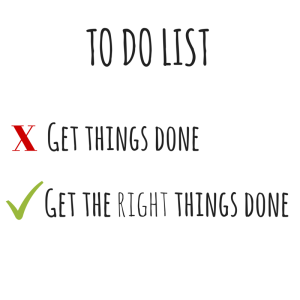 To quote Warren Bennis, “Managers do things right and leaders do the right thing.” The reason I bring this up was a recent conversation I had with a manager. He was telling me about all the work he had done and was frustrated because there was still so much more to do and no one noticed his hard work. I am sure he was doing things right, but my question to him was whether or not he was working on the right things? He looked at me a bit puzzled and said “of course, these are all the things that have to get done.” Then I asked why they needed to be done, how did they fit into the overall plan for his department and consequently into the larger plan for the company.
To quote Warren Bennis, “Managers do things right and leaders do the right thing.” The reason I bring this up was a recent conversation I had with a manager. He was telling me about all the work he had done and was frustrated because there was still so much more to do and no one noticed his hard work. I am sure he was doing things right, but my question to him was whether or not he was working on the right things? He looked at me a bit puzzled and said “of course, these are all the things that have to get done.” Then I asked why they needed to be done, how did they fit into the overall plan for his department and consequently into the larger plan for the company.
As you might imagine, he didn’t have a ready answer, but after a few minutes of thought he started to get the idea. We looked at the entire list of all the tasks he thought he needed to accomplish and tried to determine if indeed they were the right things. Obviously, some of them had to be done to keep the business on track. Others simply didn’t need to be done, but were habitual routines that had not been looked at for some time and no longer served any real purpose. Then there were those tasks that indeed were the right things to move the organization forward on the strategic plan.
After this review the list of “to dos’” dropped dramatically and more importantly, he was able to carve out time for the things that were important to the leaders of the organization. Next, we talked about how he was managing his direct reports. Were they working on the right things? He suspected they were doing exactly as he had been doing and so he went through the same exercise with each of them.
Not surprisingly, things really started to hum at the company after this and the CEO was very impressed with the performance of his managers and said so. It is important to consistently review and check processes for improvement opportunities. Periodic reviews are critical to confirm if tasks and steps still make sense over time, and if what is being done is still relevant and related to the right things for the organization. So often, we get lulled into just getting stuff done without really thinking about whether or not these tasks are optimal or even important. I for one, love crossing things off my to-do list, but it often puts me no closer to my goals. So I look at my weekly list now and only put those things down that move the needle forward and truly have to be done.
As a leader, your direct reports will mirror what you do. Make sure you are working on the right things so that they are too.

Mary, I just recently read something from a favorite garden blogger talking about “creative personalities.” Some people that fall into that category are people that are great at generating ideas, but have poor follow through on completing those tasks (or the right tasks.) She had a great idea I can’t believe I hadn’t run across before. Just because you have an idea doesn’t mean it needs to end up on your to-do list. Keep an idea file. If you’ve put the same thing in there 3 or 5 times then maybe it’s something worth following up on.
We’re also currently going through an exercise of taking our “constant improvement” culture and formalizing it through Lean efforts. Good questions to ask of your to-do list are 1)Is this something my customers are willing to pay me for? 2)If this is something they won’t pay for but is necessary? 3)If it’s not something they’ll pay for (non-value-added) and unnecessary, stop doing it.